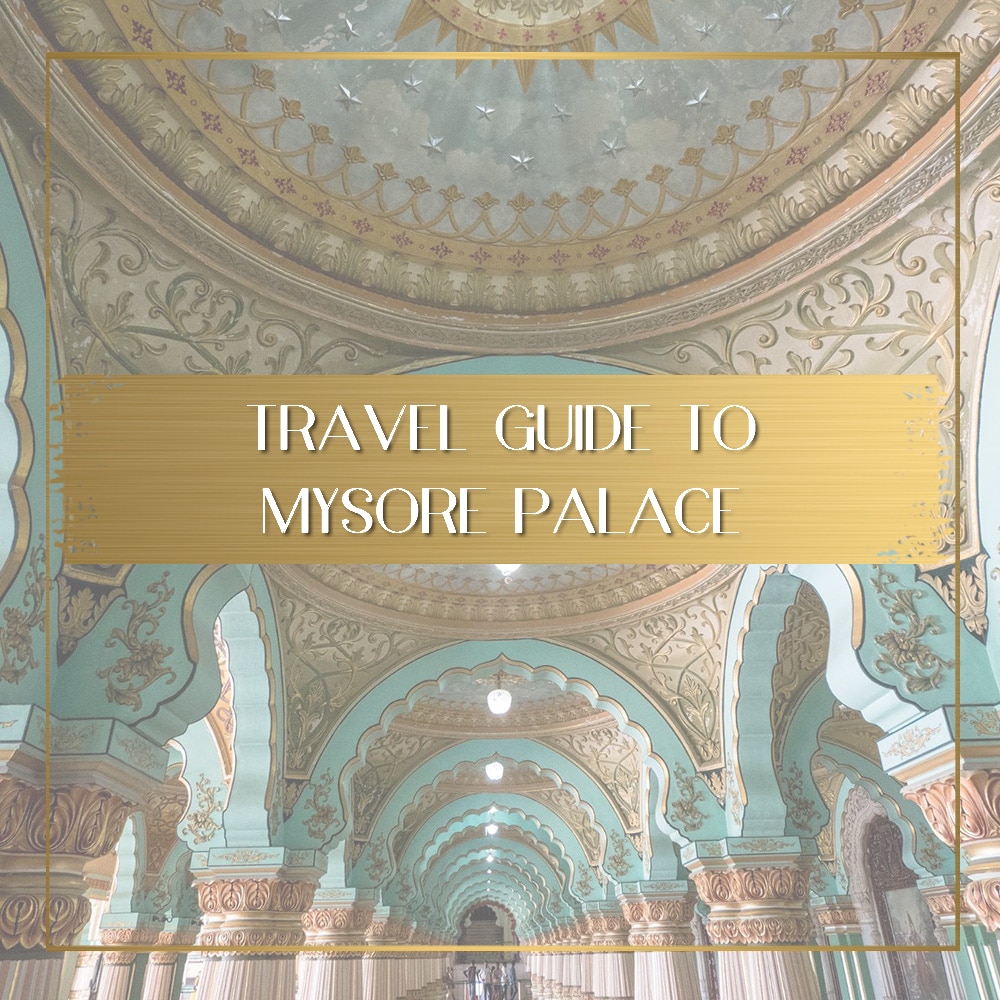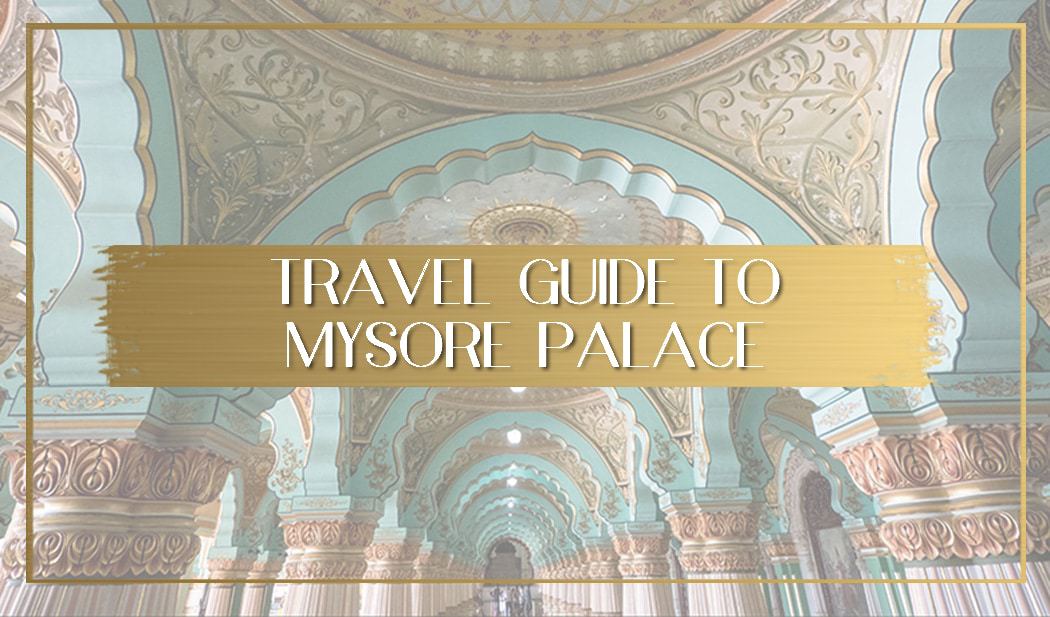The Mysore Palace is one of the grandest and most incredible buildings in India without a doubt. Unlike other of the most famous landmarks in India, the Mysore Palace is not centuries old but rather built in the 20th century on the site of previously constructed palaces. It is in fact the fourth building built in the same location.
The history of the Mysore Palace
The Mysore Palace, also known as the Amba Vilas Palace, is one of seven palaces in the royal city of Mysore. The building used to be the residence of the Wodeyar Dynasty and the seat of the Kingdom of Mysore who ruled over the city from 1399 until India’s independence in 1947 through a succession of 25 rulers.
Although the original palace was built in the 14th century in the same location, the building standing there today was finished in 1912 and was commissioned to Henry Irwin, a British architect who also designed other buildings in the south of India. Irwin was given the mandate to design “an exotic palace”, a wish which I am sure was fulfilled.
Today’s palace replaced the previous construction which was destroyed in a fire in 1897 although it had been left semi-abandoned for several years during the ruling of Hyder Ali and Tipu Sultan who moved the capital to the Tipu Sultan’s Summer Palace in Srirangapatna. It is when the Wodeyar Dynasty recovered control over the years with the defeat of Tipu Sultan by the British that the name Wodeyar was changed to Wadiyar and Mysore recovered its lost splendour. The second palace to be built before that one was struck by lightning in 1638.
The Mysore Palace is often referred to as a Gothic building but it is in fact a perfect example of Indo-Saracenic architecture blending in elements of Hindu, Muslim, Rajput, and Gothic architecture.
What to see at the Mysore Palace
The palace can already be spotted from the distance regardless of which one of the four cardinal points you approach it from. The four arched gates give way to a large garden area which surrounds the palace. The main building is three-storeys, made of stone granite, pink marble domes and a five storey tower with a gilded dome and faces the East gate which is the one used by VIP guests during the Dasara celebrations, south India’s most famous festivity which celebrates the victory of good over evil.
General entrance is via the south gate. You will need to get tickets to visit inside, something which I highly recommend. To enter the palace, you will have to remove your shoes as they are not allowed inside.
Stepping inside feels like you’re in a glamorous Bollywood movie with delicate carvings and an abundance of gold. The most notable elements of the Mysore Palace are The Durbar Hall, the Ambavilasa, the royal howdah (elephant seat made with 84kg of gold), the Kalyana Mantapa, a portrait gallery as well as the many items on display.
Some of the rooms are so intricately decorated that they may feel like a sensory overload. The palace area also holds 12 Hindu temples dating back from the 14th to the 20th centuries.
The construction is stunning to see from the outside, especially at night on Sundays and public holidays when it is lit with 97,000 lights.
Let’s take a look at some of the palace’s best elements in more detail. Here’s what to expect when you visit the Mysore Palace.
The Durbal Hall
This is the reception hall where the maharaja used to address the public. It is similar to the Ambavilasa hall in design but it is far larger and sitting atop a balcony from where the main gate can be see. The maharaja used this balcony to talk to his people and festivals and celebrations were also performed in the area in front of the balcony.
This hall is fully decorated in pink, yellow and turquoise with intricately painted columns all symmetrically spaced across the hall.
The walls of the Durbar Hall are decorated with priced paintings from the time.
Ambavilasa
Similar in design and style to The Durbar Hall is the Ambavilasa room. However, this room is even more spectacular than the Durbar Hall because of the amount of gold used on the gilded columns and the stained glass ceiling which is a masterpiece. The entire room is overwhelming and since it is one of the highlights of the visit, it is permanently crowded.
Make sure to check out the steel grills on the ceiling and the enormous chandeliers. Even the pietra dura flooring is amazing, if half hidden by the carpets. This room is as majestic and regal as any royal palace could ever look.
As you walk into the room, you will realise you can only see it from one of the sides but, as you leave and descend down the stairs following the visit’s path, make sure to turn your head around when you are in the staircase. The door that opens to the room, which can be seen from the back in the staircase, is beautiful in its own right. Make sure to note its ivory inlays.
Kalyana Mantapa
Kalyana Mantapa, also known as the marriage hall, is one of the first halls you will see in your visit and it is sure to leave you speechless.
The hall is octagonal in shape and the amount of detail and work that went into the room, with its vaulted domed ceiling and gilded columns, is remarkable. Make sure to look up to the stained glass ceiling with peacock motifs which are also reflected on the floor. The peacock is a very common animal in India, one which you will see a lot especially in Rajasthan (I saw plenty of them when staying at Amanbagh and going on an excursion to visit the haunted ruins of Bhangarh Fort) and it is also the national bird of India.
Honoring the animal that presides over the room, the main colors used here are hues of green and golden, like the peacock’s feathers. The walls are decorated with various paintings some of which depict the Dasara festival Mysore is so famous for.
Plan a visit to the Mysore Palace
You could easily spend hours inside but are likely going to want to come out because of the sheer number of visitors amounting to almost 3.5 million every year who visit the palace. That is almost 10,000 people a day.
Mysore Palace timings and cost
Tickets to visit the palace cost 50 Rupee (less than $1) for foreigners. You can get an audio guide at the palace if you don’t have your own guide. The Mysore Palace timings are from 10am to 5:30pm every day and it is lit from 7pm to 8pm on Sundays and public holidays in the state of Karnataka (public holidays in India vary by state).
There is a the Mysore Palace timings for the Sound & Light Show are from 7pm to 7:45pm from Monday to Saturday after which the palace will also be lit for an additional 15min. Tickets for the show also cost 50 Rupee. The palace remains closed to the public during Dasara which is also known as Vijayadashami Day.
How to get there – Mysore Railway Station to Mysore Palace
If you’re not coming on a guided tour or are not staying at one of the hotels mentioned below, you’ll most likely be heading in from Mysore Railway Station.
The distance is around 2kms, so the time taken from Mysore Railway Station to Mysore Palace will depend on your mode of transport. Mysore Railway Station to Mysore Palace by car is the quickest and will take around 10 minutes. If you don’t mind going by foot, it will only take around 25 mins.
Here’s a map to help you get there with 2 options on foot or by car/taxi:
Mysore and Mysore Palace tours
The best way to experience your Mysore Palace visit is to take a guided tour. This way everything is set out for you and you know you won’t be missing any of the minor details, such as the architecture and history.
Most tourists come on day trips from Bangalore, which is around a 3h drive or 140km away. If this is indeed what you plan on doing, then you can choose from a one or two day tour of Mysore both of which include Mysore Palace. Pick the option below that best suites your needs.
Full day Bangalore to Mysore tour: If you’re in a bit of a rush, then it’s best to take this 12 hour, full day sightseeing guided tour of Mysore. The tour will venture to all the most famous sites including Mysore Palace, the Gothic-style St. Philomena’s Cathedral and Chamundeshwari Temple, all in a private car. The tour includes a traditional vegetarian lunch at a local favorite, entry fees into Mysore Palace and pick up/drop off in Bangalore. You can book this tour here.
Two day Bangalore to Mysore excursion: For those travelers who would prefer to take things a bit slower and get a few more sites in, then a two day visit is a better choice. This tour includes all those in the option above, with a visit to Dariya Daulat also known as the Summer Palace of Tipu Sultan, Gumbaz Srirangapatnam, the oldest Ranganathaswamy Temple and the Tipu Sultan Mosque. There is also a dinner and overnight stay at a 4-star hotel included. This tour is a great value for money and a more leisurely tour of the ancient city. Book your tickets here.
Please note that photography and videography are not allowed inside the palace. I was granted special permission as I was on a trip aboard the Golden Chariot luxury train invited by the Government of Karnataka and the Ministry of Tourism of India.
This would fit great into your #India or #travel Pinterest boards

